Ashram Maha Rusei: A Small Temple with a Long History
23 Apr 2025
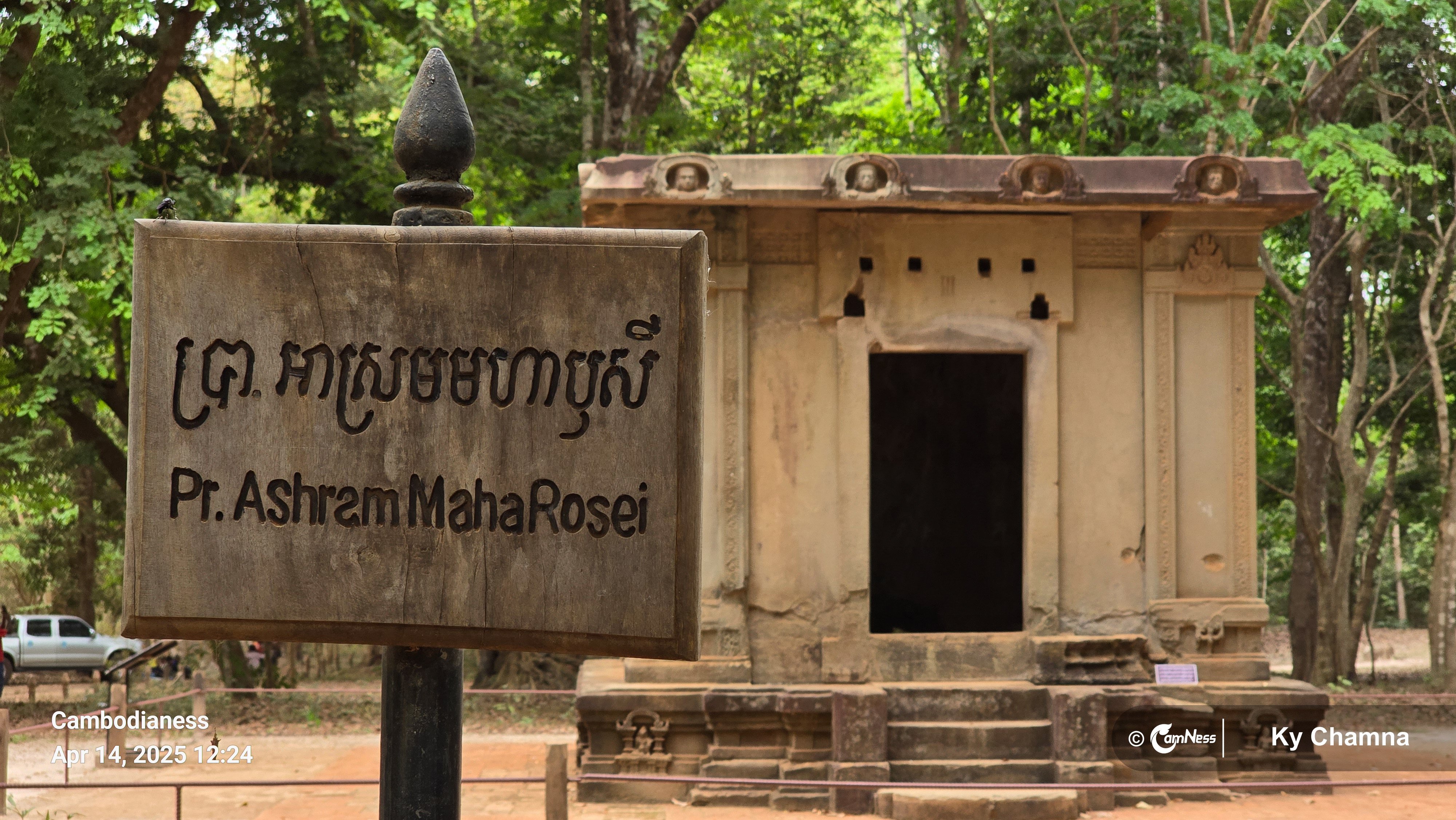
KAMPONG THOM — A world of carefully placed bricks, and intricately chiseled stones. A city that once dominated the region, bent nature, and wrote history. A center where deities saw prosperity, war, and revitalization.
More than 10 centuries have passed since the time when Sambor Prei Kuk dominated the region, a city of great historical significance situated more or less at the center of today’s Cambodia territory.
Also known as Ishanapura, this city was the capital of the Chenla Empire that flourished during the late 6th and early 7th century. Sambor Prei Kuk was inscribed on the UNESCO World Heritage list in 2017, and is today one of the four sites in the country—along with the Angkor Archaeological Park, the Preah Vihear temple, and the Koh Ker archaeological zone—to feature on that list.
Situated around 200 kilometers, or about a 3.5-hour drive, from Phnom Penh, the numerous temples at Sambor Prei Kuk are now easily accessible, except for a few that may require visitors to use motorcycles or walk to reach them.
Covering an area of around 8.4 square kilometers, Sambor Prei Kuk comprises 186 fired-brick temples divided into three major groups: the Prasat Yeay Poan group, Prasat Tao group, and the Prasat Sambor group.
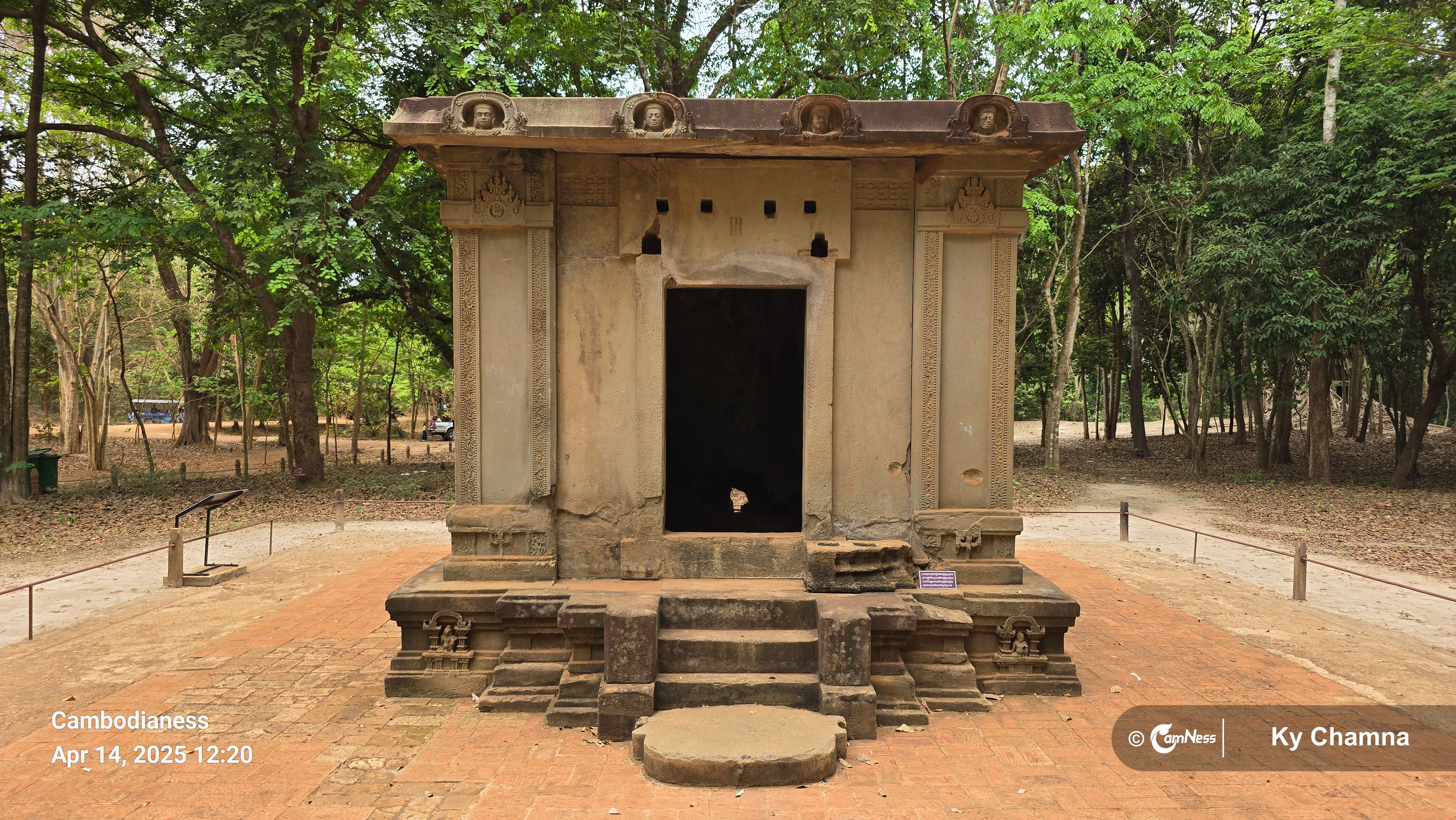
Among them is a relatively small temple with priceless architectural and historical value: the temple of Ashram Maha Rusei. Located right next to the main road leading into the temple zone, the Ashram Maha Rusei is easily reached and often visited by people.
This modest temple plays an important role in the understanding of architecture in Cambodia’s pre-Angkorian period, that is, prior to the late 8th and early 9th century. Its sandstone vault was likely built in the 7th century and its architects might have been influenced by the Gupta art of India of the early 4th-to-6th century.
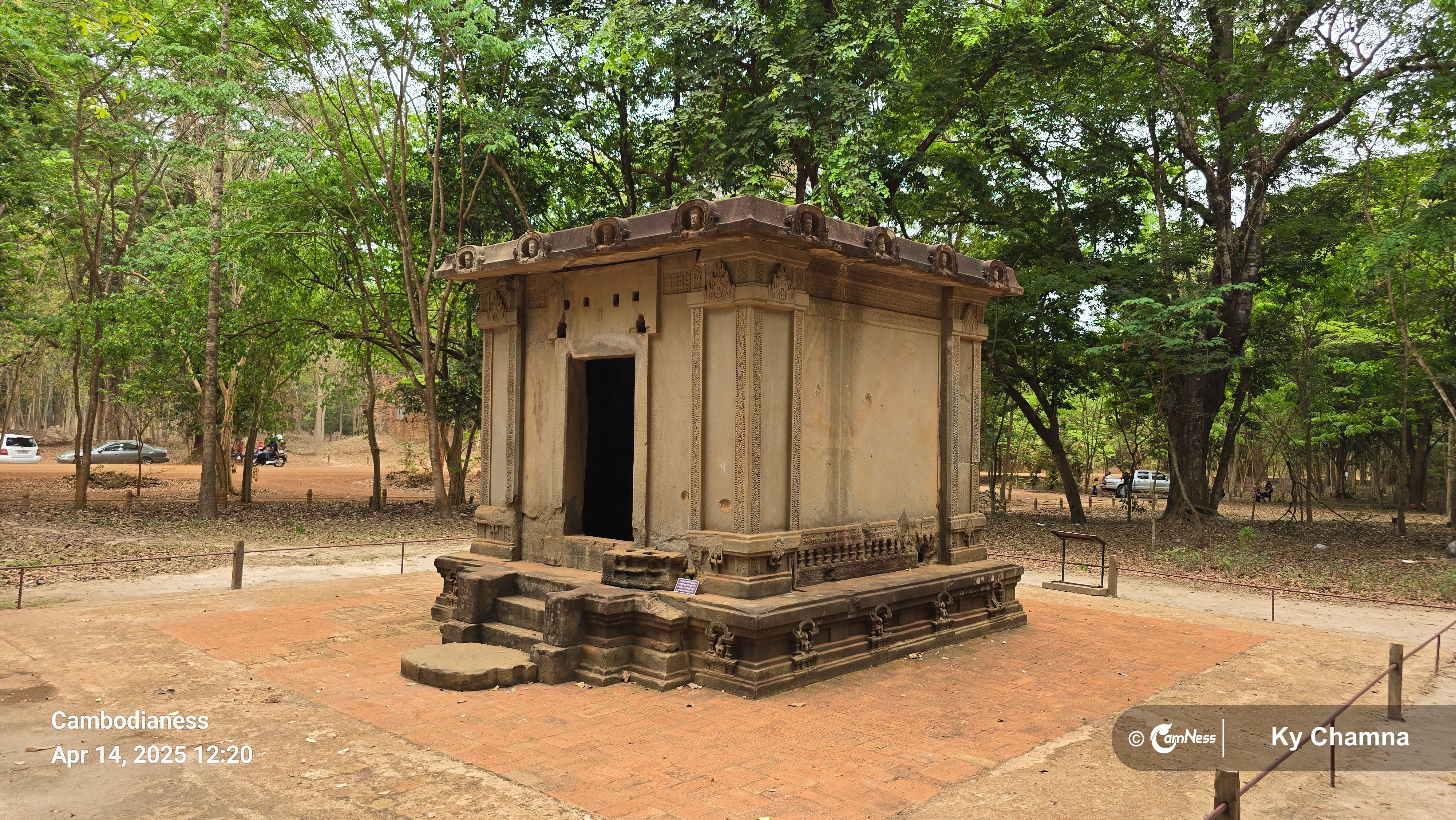
The sandstone assembly building consists of four corner pilasters and four walls situated on a square plinth with a roof. The eastern wall has an opening allowing access in and out of the cellar. Today, the pillars and small columns of the eastern opening are missing. The steps of the eastern opening are flanked by supporting pillars.
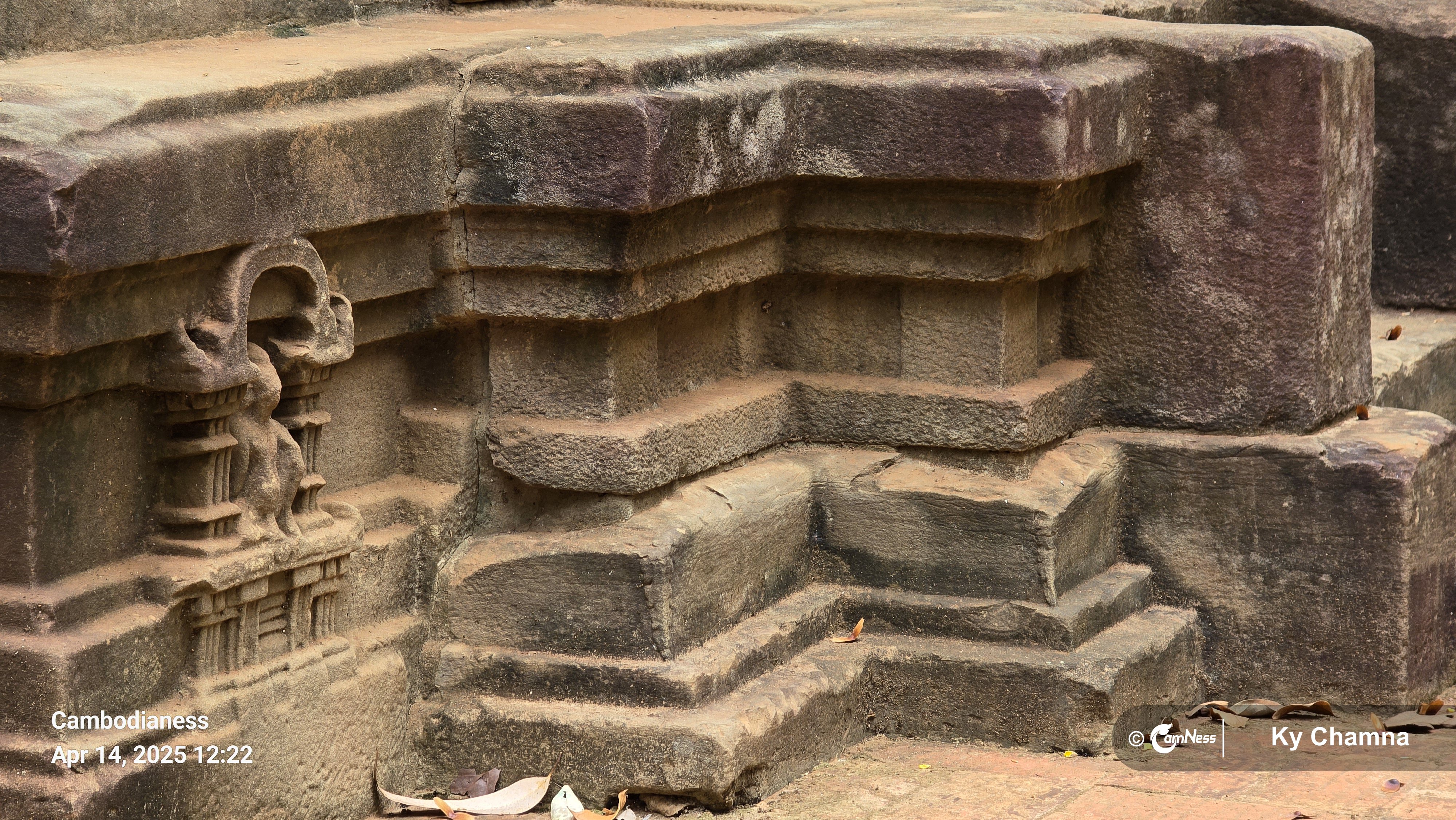
There once was a large structure surrounding the temple. During excavation, it was discovered that only the two-tiered brick platform remains. The lower tier has a dimension of around 9-by-9 meters. At the base, niches for sitting figures project outward, and the walls surmounted by a roof feature decorative friezes and a row of false balusters.

On the slab on top of the cellar, the edges of the cornices are adorned with faces of characters with hands known as “kudu.” Inside the cellar, there are traces of a statue or a pedestal suggesting the presence of an altarpiece.
A photo taken in 1916 shows Buddhist statues on the cellar platform. Local people call the site “Kuk Vihear” meaning “the temple of the monastery,” which would refer to a Buddhist monastery as, from the 15th century on, Buddhism became widely practiced throughout the country.
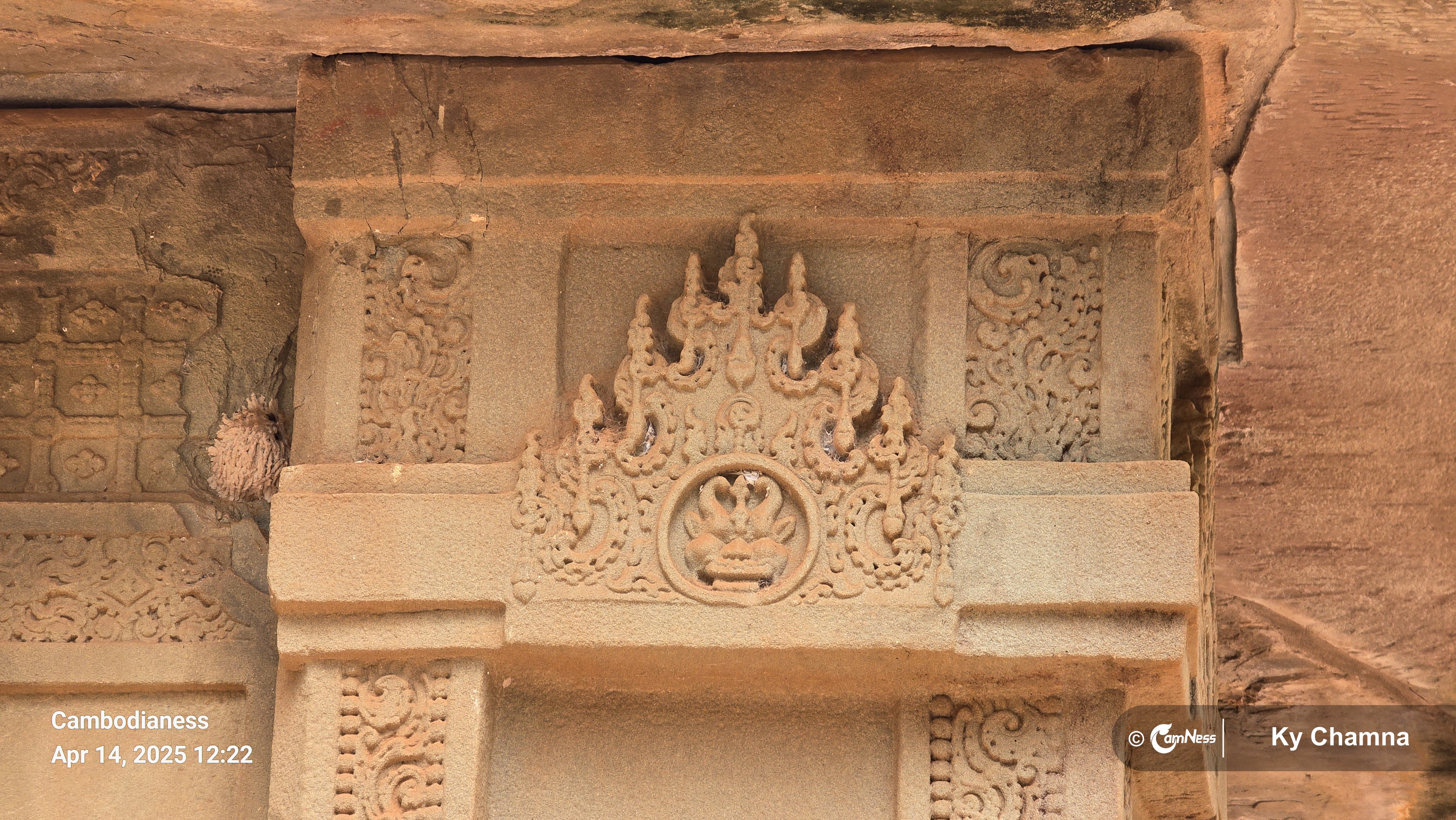
Since Sambor Prei Kuk has become a UNESCO World Heritage, the site is overseen by the National Authority of Sambor Prei Kuk (NASPK). Major conservation and preservation projects were conducted in 2022 and 2023 funded by India, which included a grant assistance for the implementation of quick impact projects under the Mekong Ganga Cooperation initiative.
The site of Sambor Prei Kuk has fascinated archeologists and researchers for a very long time. Here are some of the accounts made of the site over the centuries.










